I thought the main capital-A Architecture focus of this trip was going to be out-of-the-way buildings by Lou Kahn, but then Renzo Piano hijacked our agenda. We’ve only seen one recent museum that wasn’t by Piano, and I think the MFA addition is really Norman Foster in Piano drag.
The new Whitney is superb. Anchoring the High Line at Gansevoort St., it consolidates Chelsea’s status as the new zone for hip galleries, since Soho became a shopping mall and the East Village seems to have gone back to being the East Village. Tectonically, the building picks up on the High Line and other buildings in the area – it stands out as an institution, but it complements the older technologies beautifully.
The superstructure at the top of the picture is the key to how the building fits into the context. Every other museum in New York is a solid box which you enter to view the treasures within. (The Met has some views of the city from the large atrium areas in the new wings by Roche Dinkeloo, but that is all.) In a museum of American art – which necessarily means lots of art in and about New York – the Whitney pulls in the City as an essential part of the experience. Being in Chelsea, surrounded by low buildings, the views of midtown and downtown are unobstructed, and going back and forth from the galleries to the city is exhilarating. 
I am a big fan of museums which allow easy access to large open areas where you can shift the focus of your eyes to a distance, get some spatial relief from the necessary introversion of galleries, and let your mind wander a bit; the Whitney does this better than any museum I’ve ever seen. The large space isn’t just a relief from the galleries, it is a complement which intensifies the experience while providing a change.
The parti is classic Piano – simple, legible and appropriate. Each level has a big east-west bar of galleries, with a fairly solid wall to the south, and filtered openings to the east and west. The staff spaces are mainly on the north side, accessible from the gallery levels, but tucked away behind the circulation core.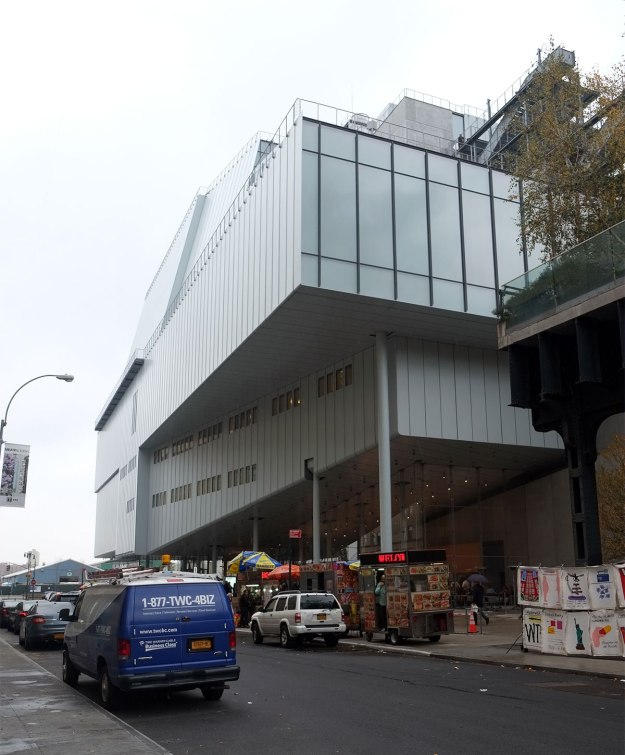
These filtered ends are tunable – allowing for a directly daylit space at the end for sculpture,  while using a series of screening elements to block direct light from reaching the galleries within. This layering strategy is being employed in many museums now, but this makes more sense to me than Foster’s MFA – it is both more flexible and less extravagant.
while using a series of screening elements to block direct light from reaching the galleries within. This layering strategy is being employed in many museums now, but this makes more sense to me than Foster’s MFA – it is both more flexible and less extravagant.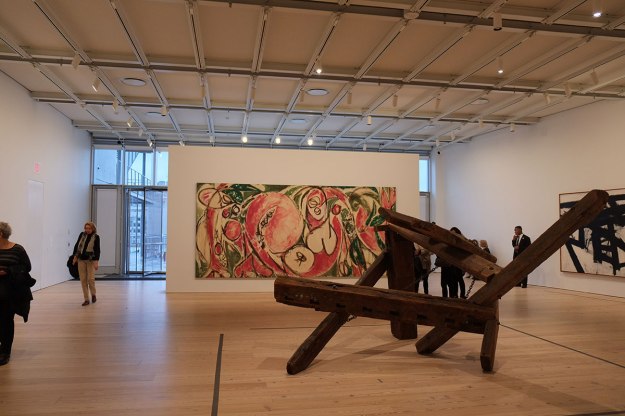
Movement through this building is directed, but not constrained. The staff suggests that you take the elevator to the top, and then walk down. Interestingly, this is the same processional as was suggested at the old Breuer Whitney. That building had gigantic elevators, which were also used as freight elevators after hours, and one notable interior stair, which was a sculptural and spatial experience, despite having only one window; Piano seems to pay homage to that. The elevators are the coolest glass elevators this side of Lloyds of London, and there is a central stair that is perfectly located and visible, a pleasure to use, again despite being completely internal. 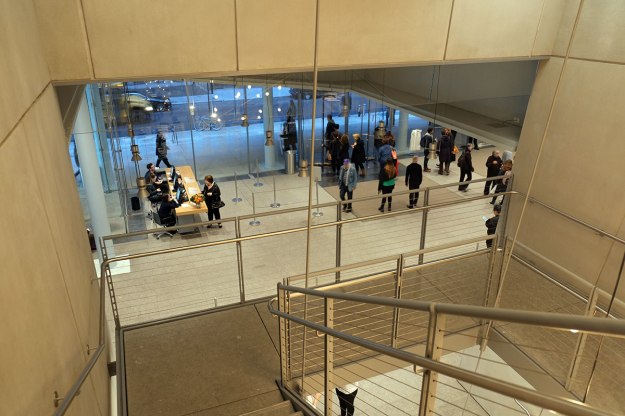

Every floor has an entry space at the top of the elevators and stair, orienting you and facilitating the introduction to the exhibit.
You can us this stair, but why wouldn’t you head outside? The steel structure relates to the High Line below, and contrasts with the slick envelope of the gallery volumes. 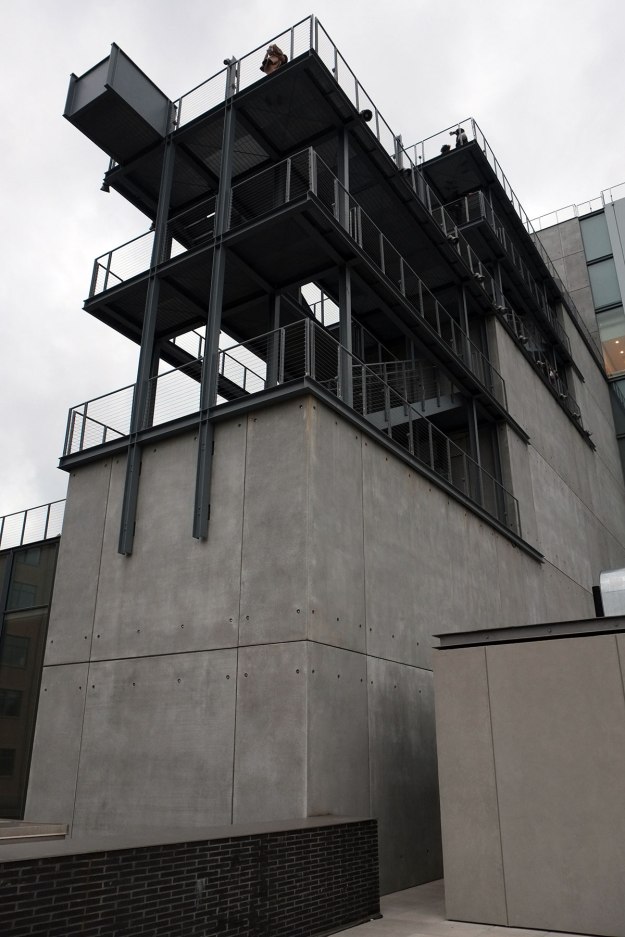

Museums can be disorienting rabbit warrens (Pelli’s remodel of MOMA was one of the worst, thankfully now somewhat mitigated.) This museum not only allows you to be oriented within the museum, but within the whole city. For a city with great views, it is remarkable how few of them are immediately accessible to the public. I took views for granted when I worked in the Empire State Building for seven years, but now returning as a tourist, I am annoyed at how I’m always in a canyon, only able to get the big view by standing in line for an hour and paying a lot of money. The Whitney offers a view of the City that is actually better (though less spectacular) than from the tower decks, and reflective of real life in the City, not the prospect of a master of the universe. 
The various spaces are all commodious and comfortable. The ground floor lobby is transparent and open to the street. The scale is wonderful, as opposed to the lobby at MOMA, which has the proportions of a parking garage. 

As in all Piano buildings, you can grasp the layout without looking at a plan, the main elements being visible from each other. 
The top floor galleries have Piano’s usual attention to daylighting, in this case a nice balancing of high-tech systems and traditional gallery room design. 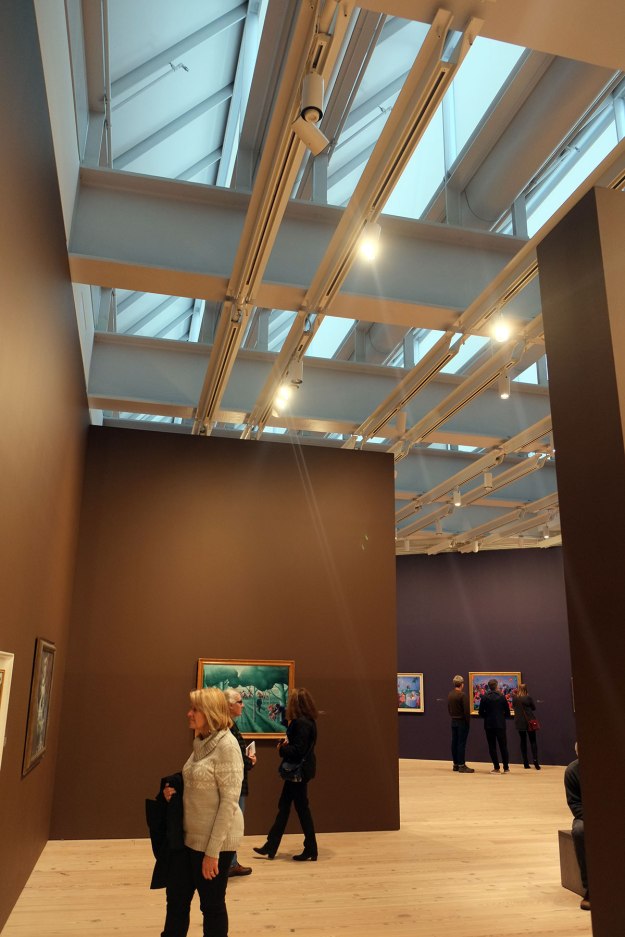
I left with the same feeling I get from many Piano museums – a wonderful museum experience, where the architecture didn’t scream for attention, but supported the art without being at all neutral.



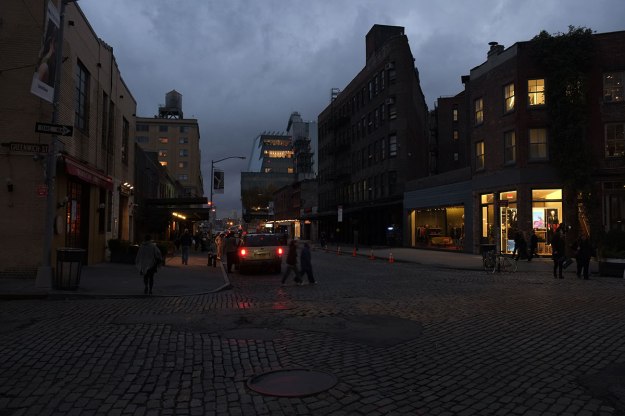
Wow!
LikeLike
Lucky you got to see this building, from what I have seen of it it is a major contribution to the city. I saw a discussion about the museum with the new director who was responsible for grabbing the site when it was offered to the Whitney, a brilliant choice I think compared with the crap they were thinking about in an addition to the existing uptown museum building. The combination of this site and Piano are magical and spectacular as your photos and writing point out. Piano’s detailing is also astounding as your one photo of the lighting system showed, his buildings are full of really thoughtful solutions to tricky design problems. I think this trip is helping you gain some new architectural inspiration!
LikeLike
You have to get out of the Northwest once in a while to see stuff!
LikeLike